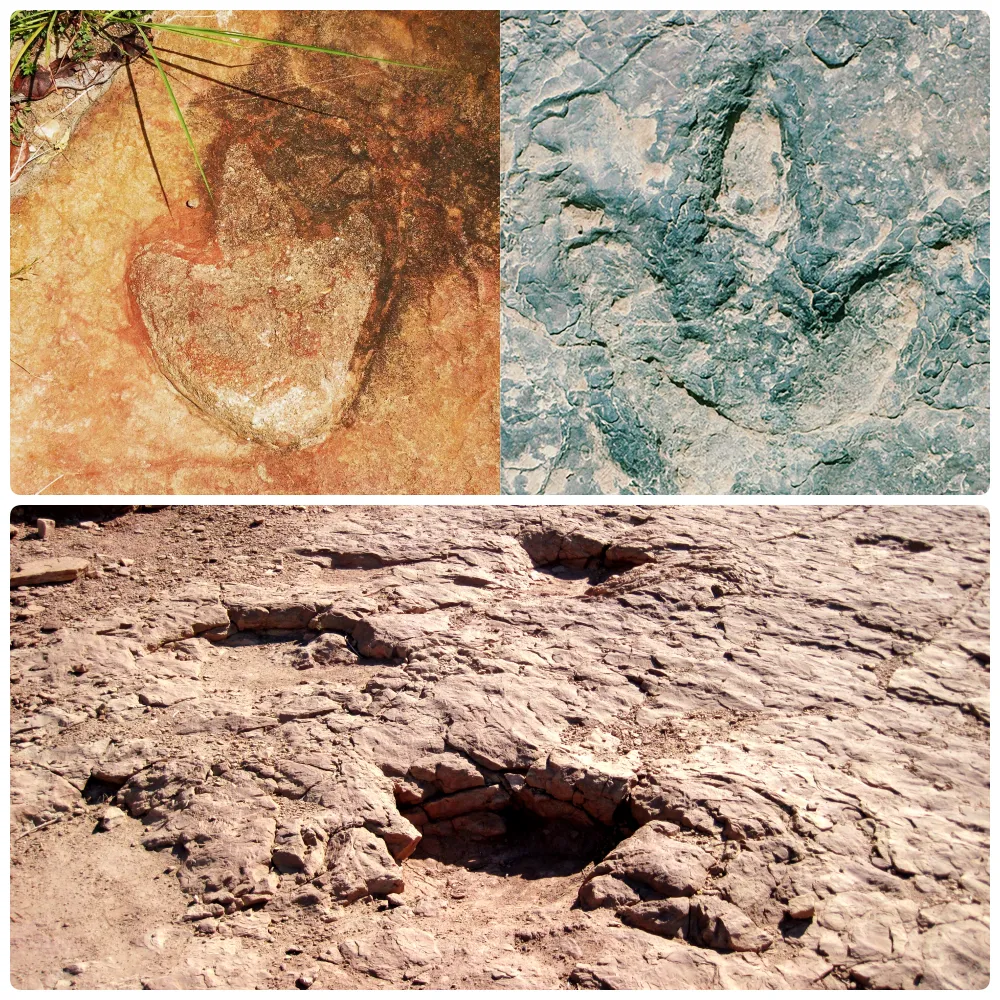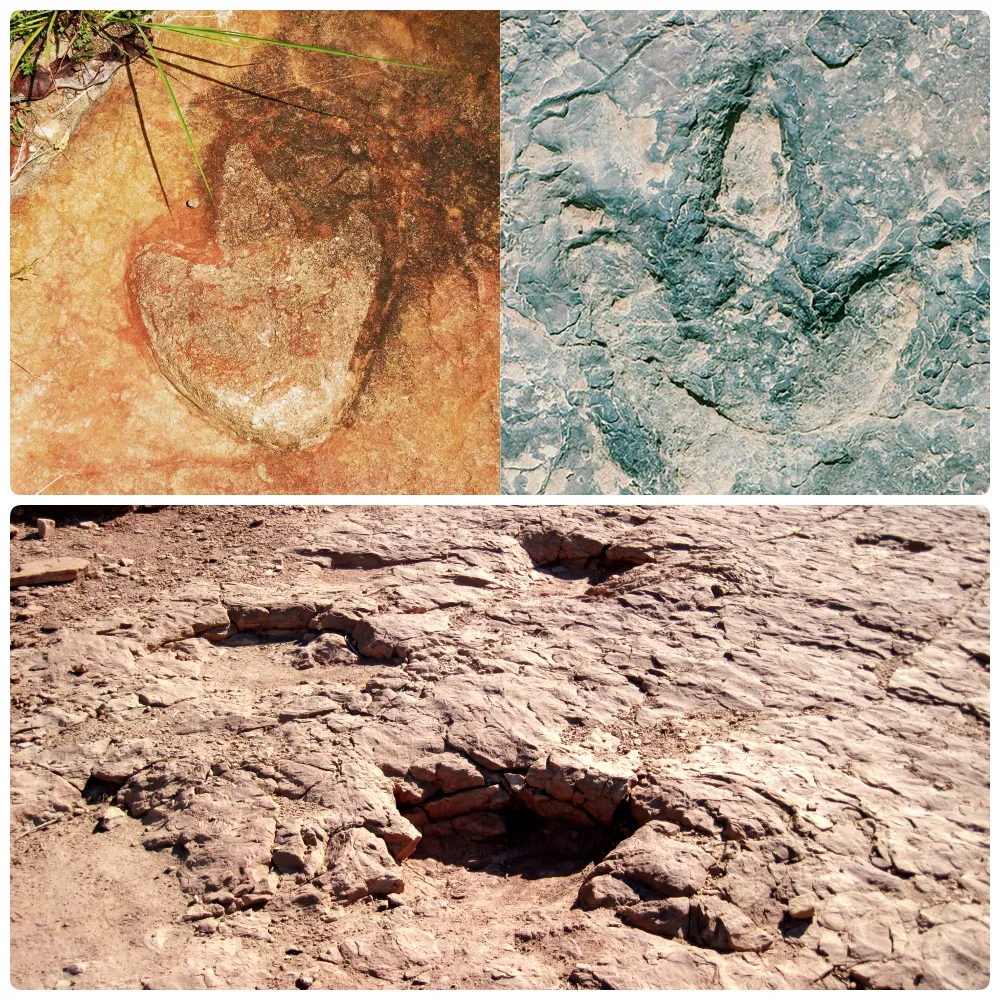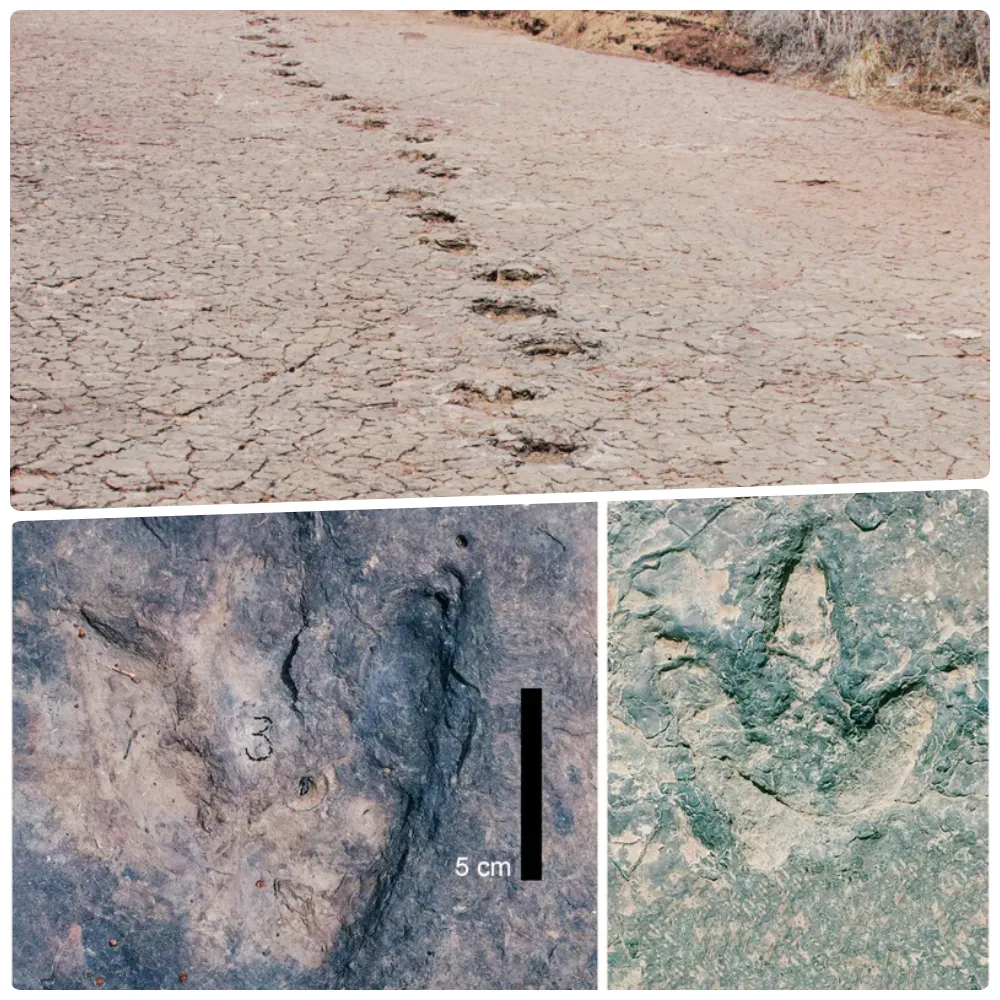
“What if the ancient world could reveal its secrets through a set of footprints? Recent discoveries of near-identical dinosaur tracks on two separate continents have unearthed a seismic story that unfolded 140 million years ago, offering a glimpse into the final days of the supercontinent Gondwana”
In a groundbreaking discovery, paleontologists have uncovered over 260 dinosaur footprints on opposite sides of the Atlantic—specifically in Brazil and Cameroon. These prints, remarkably similar in shape and size, offer compelling evidence of the dinosaurs that once roamed freely between what are now separate continents. Their journey was made possible by the last geological connection between Africa and South America before the tectonic plates carrying these landmasses began their dramatic separation.

During the Early Cretaceous period, approximately 120 million years ago, the supercontinent Gondwana was in the midst of breaking away from Pangea, reshaping the Earth’s geography forever. The elbow-shaped connection between northeastern Brazil and what is now the coast of Cameroon allowed terrestrial dinosaurs to traverse freely between the two landmasses. However, as tectonic forces began to drive Africa and South America apart, this connection was severed, leading to the creation of the South Atlantic Ocean—a rift that would ultimately span 6,000 kilometers (3,700 miles).
“The separation of these two landmasses was one of the youngest and narrowest geological connections between Africa and South America,” explained Louis Jacobs, a paleontologist from Southern Methodist University. “Animals on either side of this narrow stretch could move across it, but as the continents drifted apart, that became impossible.” The tectonic shift that began around 140 million years ago tore the Earth’s crust along its weakest points, creating rifts that were later filled with magma. This process not only formed the South Atlantic Ocean but also left behind significant geological scars—half-graben basins that now house ancient sediments and fossilized remains, including these precious dinosaur tracks.
The footprints discovered in Brazil and Cameroon are a testament to this ancient continental drift. They belong to a diverse group of dinosaurs, including theropods, sauropods, and ornithischians. The similarity in these tracks, despite being separated by vast distances and millions of years, tells a story of a time when the world was still interconnected, and the continents were in their early stages of drifting apart.
“In our study, we’ve tracked these footprints back to when they were first impressed in mud along rivers and lakes over 120 million years ago, in locations that were once contiguous on a single landmass,” the researchers noted. “Now, these sites are separated by an ocean and 6,000 kilometers of water.”
The findings, published by the New Mexico Museum of Natural History and Science, provide a fascinating glimpse into the past, connecting dots across continents that were once joined. These dinosaur tracks are more than just footprints; they are a record of a world in transition, a world where the forces of nature were beginning to shape the Earth as we know it today.
As scientists continue to study these ancient tracks, they unlock not only the secrets of the dinosaurs that made them but also the dramatic tectonic events that forever altered the face of our planet. The discovery is a powerful reminder of the Earth’s dynamic history and the profound changes that have occurred over millions of years.







